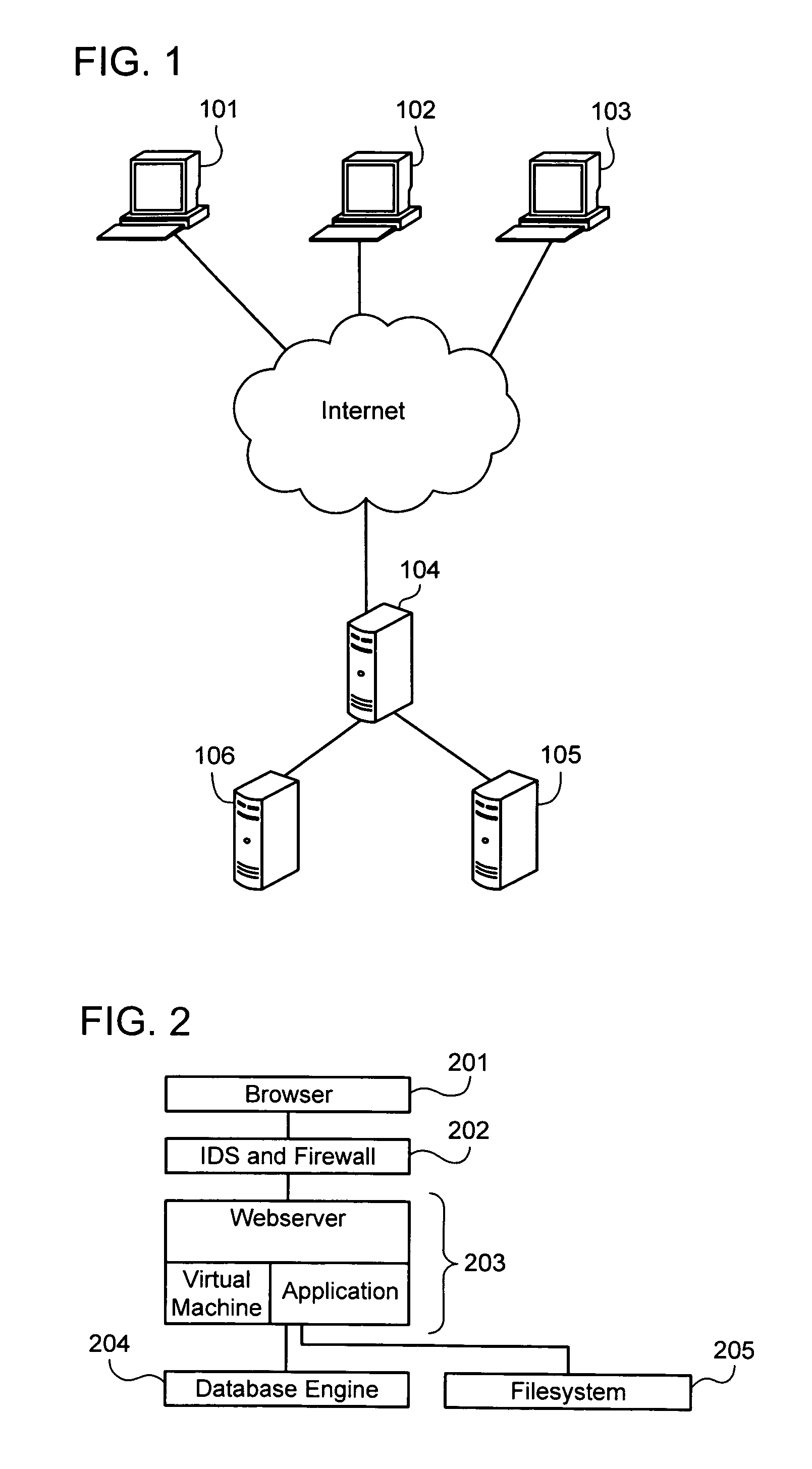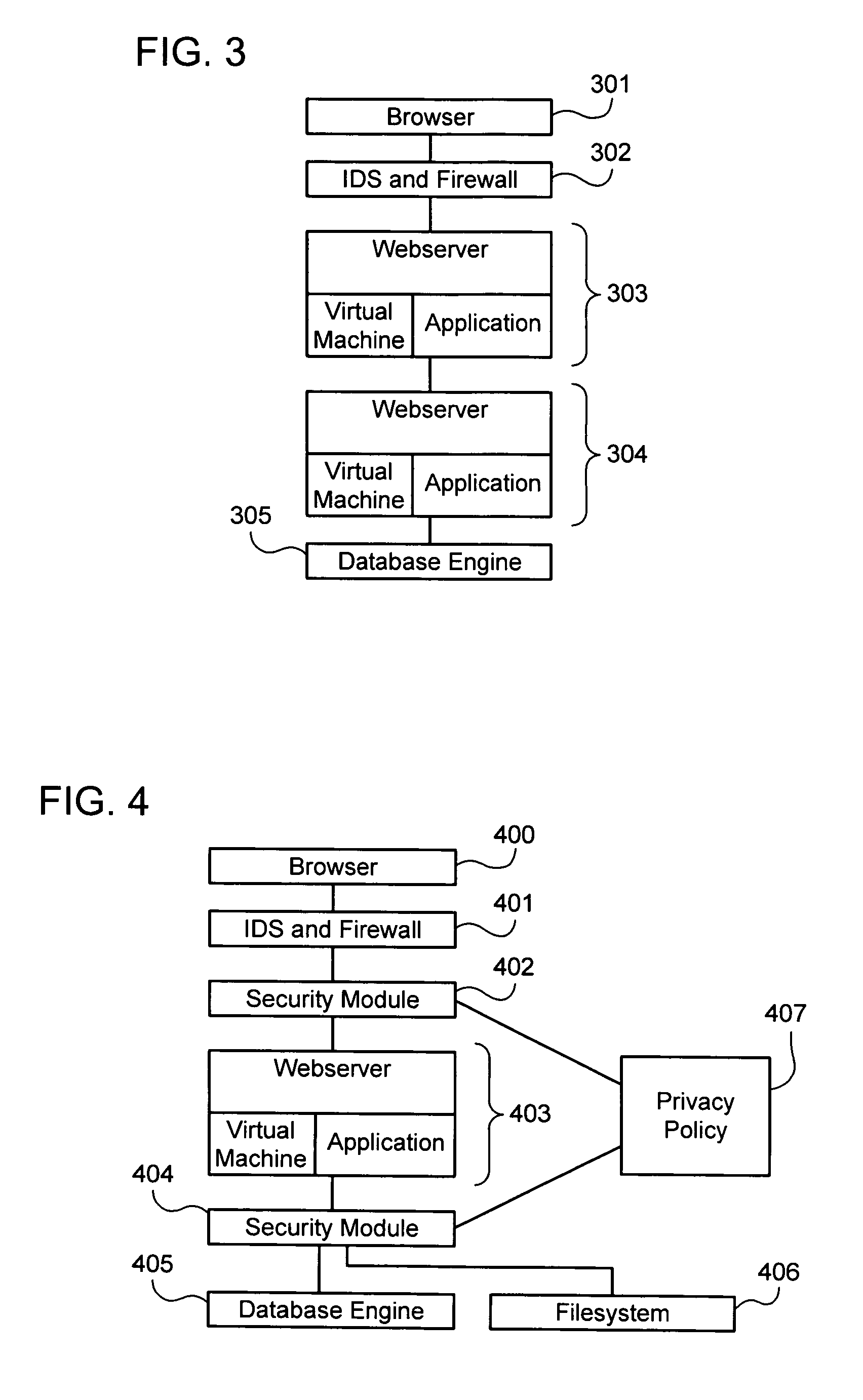Establishing and enforcing security and privacy policies in web-based applications
a security and privacy policy and web application technology, applied in the field of establishing and enforcing security and privacy policies in web-based applications, can solve the problems of many conventional security modules for addressing web application security that lack functionality, and the need for security precautions and concerns were not taken into account in sufficient measure, so as to improve security and privacy for web-based applications, improve security and privacy, and improve the effect of security and privacy
- Summary
- Abstract
- Description
- Claims
- Application Information
AI Technical Summary
Benefits of technology
Problems solved by technology
Method used
Image
Examples
Embodiment Construction
[0042] As used herein, a “web application” is a computer program for providing computer-related functionality to a user via a network, such as for example, the Internet, or more specifically, the World-wide Web. Web applications may be designed by developers according to the directives of “security officers,” who are responsible for creating and / or maintaining specifications relating to security and privacy, and in particular, web security and privacy. Web applications are accessed by “users” using a “web browser,” which is a program configured to locate and receive data, such as text, graphics, audio and / or video data from the Web, and present that data to a user (e.g., by locating and displaying a web page, as discussed below).
[0043] When a web application is accessed by a user, a communication channel is created between the web application and the user's browser. The user may send data to the web application, such as “page requests,”“cookies,” and other environmental information...
PUM
 Login to View More
Login to View More Abstract
Description
Claims
Application Information
 Login to View More
Login to View More - R&D
- Intellectual Property
- Life Sciences
- Materials
- Tech Scout
- Unparalleled Data Quality
- Higher Quality Content
- 60% Fewer Hallucinations
Browse by: Latest US Patents, China's latest patents, Technical Efficacy Thesaurus, Application Domain, Technology Topic, Popular Technical Reports.
© 2025 PatSnap. All rights reserved.Legal|Privacy policy|Modern Slavery Act Transparency Statement|Sitemap|About US| Contact US: help@patsnap.com



